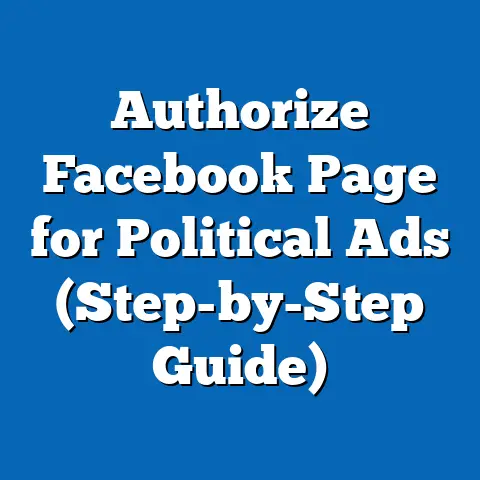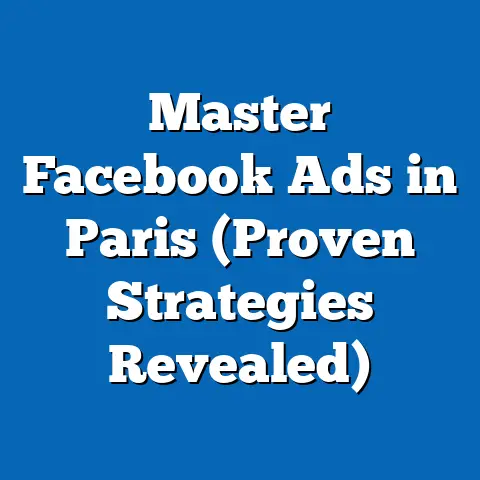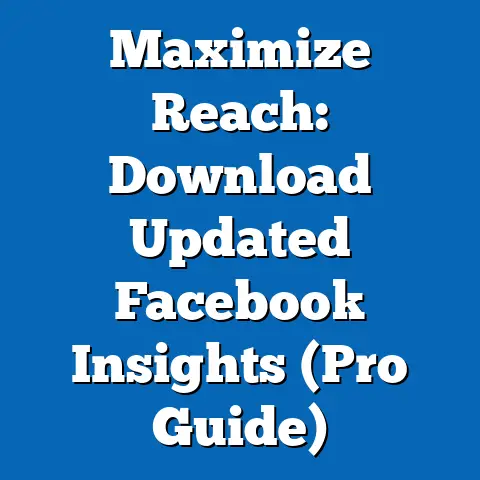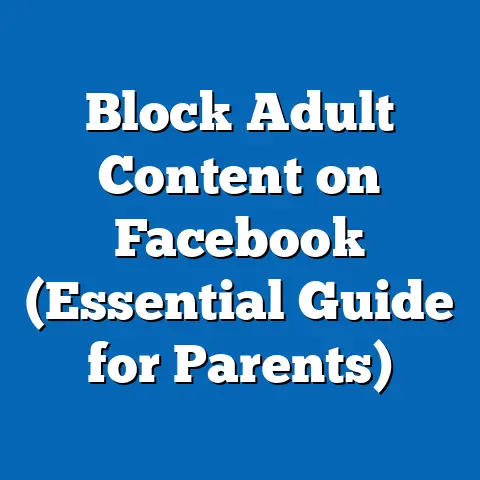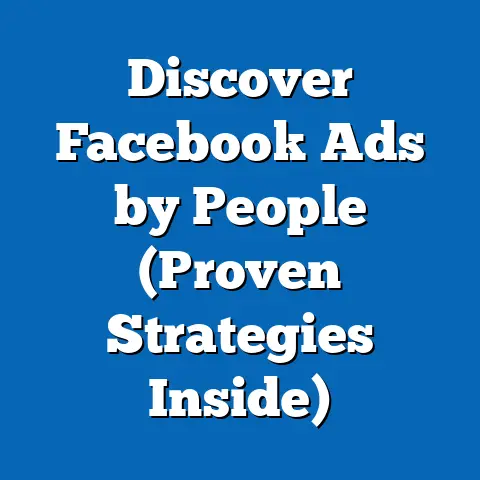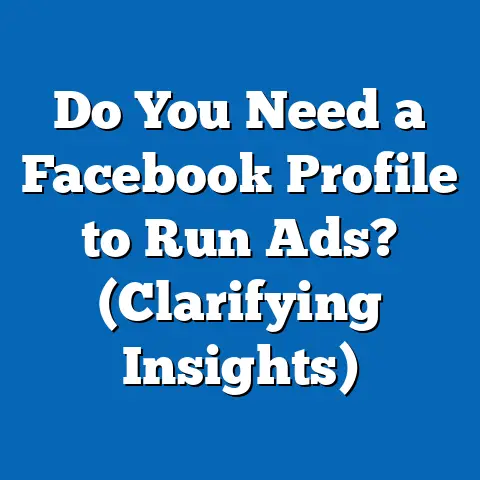Maximize Reach with Mortgage Broker Facebook Ads (Expert Strategies)
In today’s fiercely competitive mortgage industry, standing out from the crowd and reaching potential clients requires more than just traditional marketing methods. It demands a strategic and targeted approach, and that’s where Facebook advertising comes in. I’ve seen firsthand how powerful Facebook can be for mortgage brokers, transforming their lead generation and ultimately boosting their business. Think of it this way: your ideal client is scrolling through their feed right now, and with the right Facebook ad strategy, you can capture their attention and guide them towards their dream home.
Consider this: according to recent statistics, Facebook is used by approximately 72% of U.S. adults. Further, studies show that businesses utilizing targeted advertising on Facebook have seen a 20-30% increase in lead generation. These aren’t just numbers; they represent real opportunities for mortgage brokers like you to connect with potential clients actively seeking your services. If you’re not leveraging Facebook ads, you’re missing out on a massive pool of potential leads and leaving money on the table. This guide is designed to equip you with the expert strategies you need to maximize your reach, generate quality leads, and convert them into happy homeowners. Let’s dive in!
Understanding the Facebook Advertising Landscape
Before you start throwing money at Facebook ads, it’s crucial to understand the lay of the land. Facebook advertising isn’t just about creating an ad and hoping for the best; it’s about strategic targeting, compelling content, and continuous optimization.
At its core, Facebook advertising allows you to reach a highly specific audience based on demographics, interests, behaviors, and even life events. You bid for ad space, and Facebook’s algorithm determines which ads to show to which users based on various factors, including your bid, the ad’s quality, and its relevance to the user.
There’s a wide range of ad formats available, from simple image ads to engaging video ads, carousel ads that showcase multiple products or services, and lead generation ads that allow users to submit their information directly from the ad. Each format has its strengths and weaknesses, and the best choice depends on your specific goals and target audience.
One of the biggest advantages of Facebook advertising is its vast user base. With billions of active users worldwide, Facebook provides unparalleled reach. But it’s not just about the numbers; it’s about the ability to target specific demographics. For mortgage brokers, this means you can target first-time homebuyers, people interested in refinancing, veterans eligible for VA loans, and more.
Understanding your target audience is paramount. Are you trying to reach millennials eager to buy their first home? Or are you focusing on older homeowners looking to refinance for better rates? Knowing your audience’s demographics, interests, and pain points will allow you to craft ads that resonate with them and drive conversions.
The mortgage industry on Facebook is dynamic, with trends constantly evolving. Currently, I’m seeing a rise in video ads that offer quick tips and advice on mortgage-related topics. There’s also a growing emphasis on personalized ads that address specific needs and concerns. Keeping an eye on these trends will help you stay ahead of the curve and ensure your ads remain relevant and engaging.
Key Takeaway: Facebook advertising is a powerful tool for mortgage brokers, but it requires a strategic approach. Understanding the platform’s basics, your target audience, and current industry trends is essential for success.
Crafting Compelling Ad Content
You can have the most precisely targeted ad campaign in the world, but if your ad content falls flat, it won’t deliver the results you’re looking for. Compelling ad content is the heart and soul of any successful Facebook advertising campaign.
The key components of a high-performing Facebook ad include:
- Visually Appealing Images or Videos: Your visuals are the first thing people will see, so make them count. Use high-quality images or videos that capture attention and convey your message effectively.
- Headline that Grabs Attention: Your headline should be concise, compelling, and relevant to your target audience. It should immediately pique their interest and make them want to learn more.
- Ad Copy that Speaks to Their Needs: Your ad copy should clearly communicate the value you offer and address the pain points of your target audience. Use persuasive language and highlight the benefits of working with you.
- Clear Call-to-Action: Tell people what you want them to do next. Whether it’s visiting your website, filling out a form, or calling you directly, make sure your call-to-action is clear and easy to follow.
Creating engaging content that resonates with your target audience requires understanding their needs and concerns. For example, if you’re targeting first-time homebuyers, you might create an ad that addresses their fears about the mortgage process and offers a free guide to help them navigate it.
Relatable scenarios and pain points are powerful tools for connecting with potential clients. Consider creating an ad that shows a young couple struggling to save for a down payment, and then positions you as the expert who can help them achieve their dream of homeownership.
I’ve seen some mortgage brokers achieve incredible results by using storytelling in their ad campaigns. One broker created a video series that followed a family’s journey through the home buying process, from initial consultation to closing day. This humanized the brand and built trust with potential clients.
Another successful ad campaign I encountered focused on a compelling call-to-action: “Get Pre-Approved in 15 Minutes!” This ad targeted busy professionals who wanted a quick and easy way to determine their eligibility for a mortgage. The simplicity and speed of the offer resonated with the audience, leading to a significant increase in leads.
Key Takeaway: Compelling ad content is essential for capturing attention and driving conversions. Use visually appealing images or videos, craft headlines that grab attention, write ad copy that speaks to your target audience’s needs, and include a clear call-to-action.
Utilizing Facebook Targeting Options
Facebook’s targeting options are what truly set it apart from other advertising platforms. The ability to laser-focus your ads on specific demographics, interests, and behaviors allows you to reach the people who are most likely to be interested in your services.
Here’s a breakdown of some of the most powerful targeting options available:
- Custom Audiences: These allow you to upload your existing customer list, website visitors, or app users and target them directly on Facebook. This is a great way to re-engage past clients or nurture leads who have already shown interest in your services.
- Lookalike Audiences: These allow you to create new audiences based on the characteristics of your existing customers. Facebook will identify users who share similar demographics, interests, and behaviors with your best clients, allowing you to expand your reach to a highly qualified audience.
- Interest Targeting: This allows you to target users based on their expressed interests on Facebook. For example, you could target people interested in “mortgages,” “real estate,” “first-time homebuyer programs,” or “refinancing.”
- Demographic Targeting: This allows you to target users based on their age, gender, location, education, income, and other demographic factors. This is useful for targeting specific segments of the population, such as millennials or high-income earners.
- Behavioral Targeting: This allows you to target users based on their online behaviors, such as their purchase history, device usage, or travel habits. This can be useful for targeting people who are actively searching for a new home or who have recently moved to your area.
Retargeting previous website visitors or engaged users is a highly effective strategy for maximizing conversion rates. By showing ads to people who have already visited your website or interacted with your Facebook page, you can remind them of your services and encourage them to take the next step.
Here’s a step-by-step guide on how to set up targeted ad campaigns on Facebook:
- Define Your Target Audience: Before you start creating your ad campaign, take the time to define your ideal client. Consider their demographics, interests, behaviors, and pain points.
- Create Your Ad Campaign: In Facebook Ads Manager, create a new campaign and choose your objective (e.g., lead generation, website traffic).
- Set Your Budget and Schedule: Determine how much you’re willing to spend on your ad campaign and how long you want it to run.
- Choose Your Targeting Options: Select the targeting options that best align with your target audience. Consider using Custom Audiences, Lookalike Audiences, Interest Targeting, Demographic Targeting, and Behavioral Targeting.
- Create Your Ad: Design your ad with compelling visuals, headlines, and ad copy. Make sure your call-to-action is clear and easy to follow.
- Review and Publish Your Campaign: Before you launch your campaign, review all of your settings to ensure everything is correct. Then, publish your campaign and start reaching your target audience.
Key Takeaway: Facebook’s targeting options are incredibly powerful. By using Custom Audiences, Lookalike Audiences, Interest Targeting, Demographic Targeting, and Behavioral Targeting, you can reach a highly qualified audience and maximize your conversion rates.
Measuring Success and Optimizing Campaigns
Once your Facebook ad campaigns are up and running, it’s crucial to track their performance and make adjustments as needed. Measuring success and optimizing your campaigns is an ongoing process that requires careful monitoring and analysis.
Here are some of the key performance indicators (KPIs) that mortgage brokers should monitor:
- Click-Through Rate (CTR): This measures the percentage of people who saw your ad and clicked on it. A high CTR indicates that your ad is relevant and engaging to your target audience.
- Conversion Rate: This measures the percentage of people who clicked on your ad and completed a desired action, such as filling out a lead form or visiting your website. A high conversion rate indicates that your ad is effectively driving leads and sales.
- Cost Per Lead (CPL): This measures the average cost of acquiring a lead through your Facebook ad campaign. A low CPL indicates that your campaign is cost-effective and generating a good return on investment.
- Return on Ad Spend (ROAS): This measures the revenue generated for every dollar spent on your Facebook ad campaign. A high ROAS indicates that your campaign is highly profitable.
A/B testing different ad formats and content is essential for identifying what works best for your target audience. Try testing different headlines, images, ad copy, and calls-to-action to see which combinations generate the best results.
I recommend using Facebook’s built-in A/B testing tools to streamline the process. These tools allow you to easily create and track multiple versions of your ads, making it easier to identify the winning combinations.
Ongoing optimization is crucial for maximizing the performance of your Facebook ad campaigns. Based on your performance data, make adjustments to your targeting options, ad content, and bidding strategies.
Flexibility and adaptation are key to success. The Facebook advertising landscape is constantly evolving, so it’s important to stay up-to-date on the latest trends and best practices. Be willing to experiment with new strategies and adapt your approach as needed.
Key Takeaway: Measuring success and optimizing your campaigns is an ongoing process. Monitor your KPIs, A/B test different ad formats and content, and make adjustments based on your performance data. Flexibility and adaptation are key to staying ahead of the curve.
Conclusion
Facebook advertising offers mortgage brokers an unparalleled opportunity to connect with potential clients and grow their business. By understanding the Facebook advertising landscape, crafting compelling ad content, utilizing Facebook’s targeting options, and measuring success and optimizing campaigns, you can maximize your reach and generate high-quality leads.
Remember, the mortgage industry is competitive, and standing out requires a strategic and innovative approach. By implementing the expert strategies discussed in this article, you can enhance your marketing efforts and effectively connect with potential clients in a crowded market.
Don’t be afraid to experiment, test new ideas, and adapt your approach as needed. The key to success is to stay focused on your target audience, deliver value, and continuously optimize your campaigns for maximum performance. With dedication and a strategic mindset, you can unlock the full potential of Facebook advertising and achieve significant growth and success in your mortgage business. Now go out there and start connecting with your future clients!

